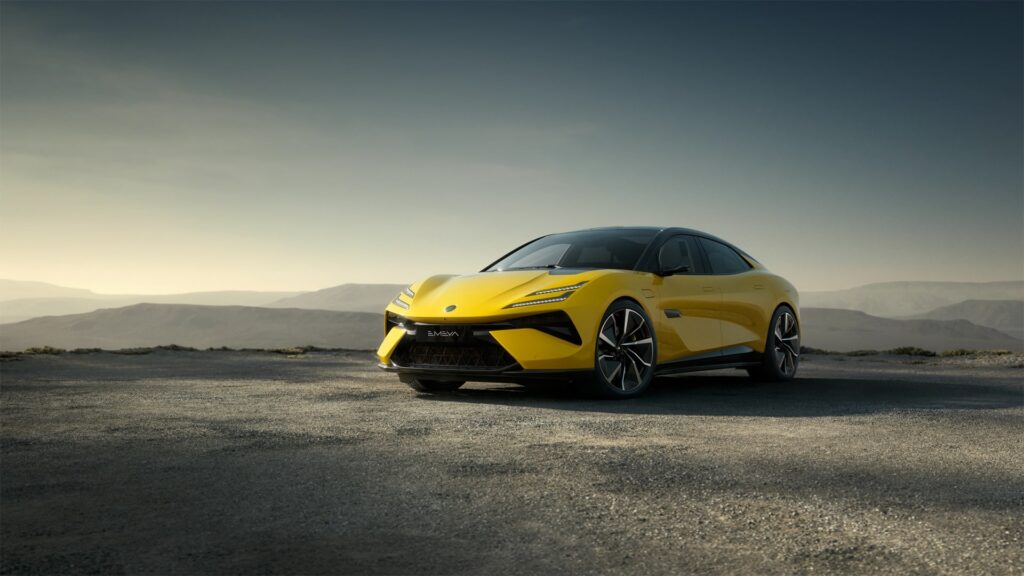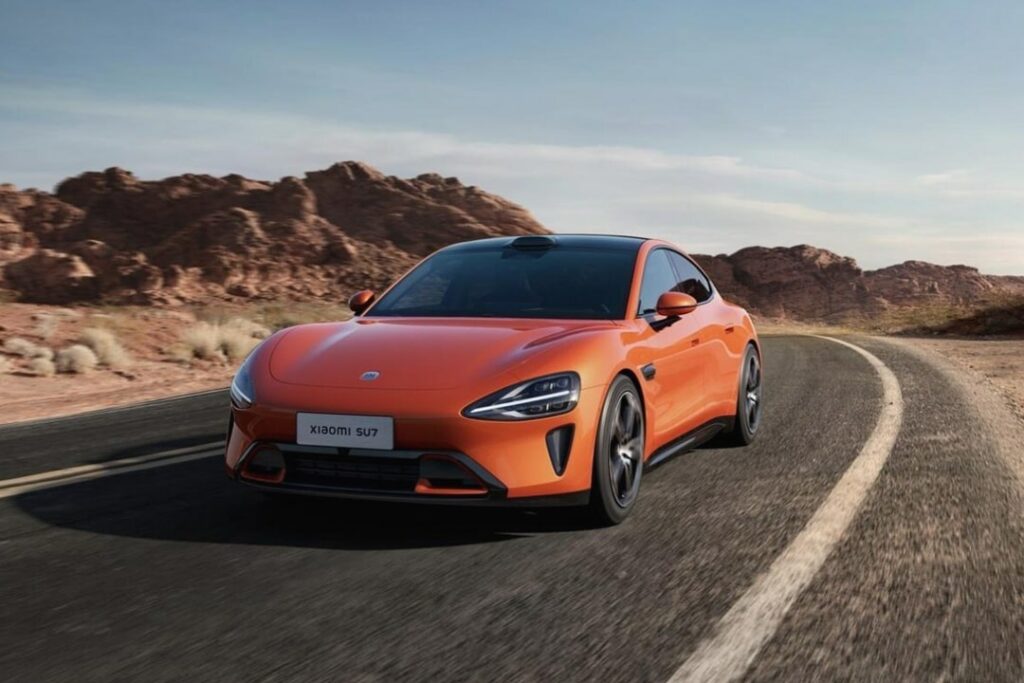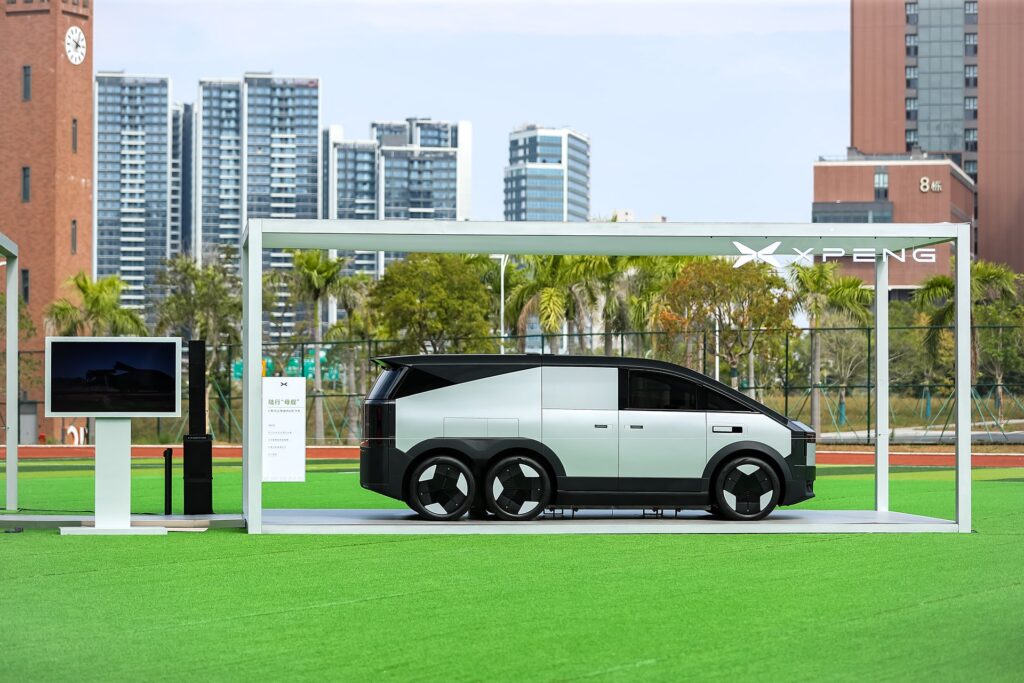Maextro S800: Huawei’s audacious bid to win the luxury EV market

Huawei and JAC are banking on the Maextro S800’s blend of tradition and innovation to justify its lofty price tag.
The luxury electric vehicle Maextro S800, co-developed by Huawei and JAC Group, has finally been unveiled, sparking debate with its price range of RMB 1–1.5 million (USD 140,000–210,000) and design. Critics argue that the pricing lacks a solid brand foundation for the debut model of a new brand, while others believe the exterior design is neither striking or grand enough for its premium positioning. Still, establishing the perception of a RMB 1 million vehicle is seen as a significant step toward positioning it as a luxury offering.
Sources told 36Kr that the Maextro S800 will officially launch in 2025, with deliveries beginning the same year. The sales target is set at 2,000 units for the first year. While this figure might appear modest, it is an ambitious goal for the luxury EV market. For context, monthly sales of the Mercedes-Benz EQS are in the dozens, and the BMW i7 averages around 100 units. Meeting this target could make the Maextro S800 the bestselling EV in its price segment.
But what justifies the lofty price tag of this new entrant?
Video highlighting the Maextro S800’s design. Video source: Huawei and JAC Group.
The importance of design in luxury cars
Chinese brands are not entirely absent from the realm of luxury EVs priced above RMB 1 million. Geely-backed Lotus Cars, for instance, offers two premium EV models in this segment. Consider the Emeya sedan, delivered earlier this year, with a price range spanning RMB 668,000 to RMB 1.368 million (USD 93,520–191,520). It boasts notable credentials: 0–100 km/h acceleration in 2.78 seconds, acclaimed handling, four light detection and ranging (LiDAR) sensors for intelligent driving, and a 15-inch fluid touchscreen display.
Yet, since deliveries began in March, fewer than 300 Emeya units have been registered. This suggests that consumers remain unconvinced by these technological features alone.

On the other hand, take the Porsche Taycan. Between January and September this year, sales of the all-electric Taycan in China halved compared to the previous year. Still, it managed to deliver 14,042 units in that period.
This success comes despite its glaring omissions: no advanced autonomous driving features, an optional passenger screen priced at RMB 45,000 (USD 6,300), a subpar Chinese voice control system, and a nondescript interior space. These shortcomings, however, are outweighed by two factors: brand power and design appeal.
The Taycan’s stylish design plays a significant role in its desirability. Evidence of this can be seen in Xiaomi’s SU7, whose design draws inspiration from the Taycan. The Xiaomi model continues to receive thousands of monthly orders even six months post-launch, consistently turning heads on the streets.

For a luxury vehicle, design is non-negotiable. It is a core lesson that Maextro must internalize.
At nearly 5.5 meters in length and with a wheelbase of 3.3 meters, the Maextro S800 occupies a physical space similar to the Maybach S 680. This commanding size lends it the presence expected of a luxury vehicle.
A closer look reveals how the S800 integrates hallmarks of opulence. It features a two-tone body and large wheels reminiscent of Maybach, window designs evoking BMW’s Hofmeister kink, and the same purple-silver paint and starlit roof seen in the Rolls-Royce Phantom. These elements suggest that Maextro has intentionally drawn from established luxury design codes to cultivate an image of grandeur.
Notably, Maextro’s departure from Huawei’s HarmonyOS design language marks a shift toward a more traditional aesthetic. By adopting motifs from legacy luxury brands, the S800 has forged a visual identity that aligns with the expectations of high-end consumers. This is a pragmatic move, as these design philosophies are deeply rooted in the psyche of luxury buyers and remain the quickest way to gain recognition in this competitive segment.
Design often begins with imitation, especially when emerging brands lack a fully developed visual language. With careful execution, such emulation can resonate with consumers. The Maextro S800 demonstrates this principle: its subtle paint sheen, which shifts elegantly under varying light, is a testament to the thoughtfulness of its design.
The vehicle also incorporates an original thematic element—the galaxy. From headlights to door handles to taillights, celestial-inspired motifs unify the car’s design. This infusion of originality adds depth to Maextro’s otherwise derivative aesthetic, suggesting that while it borrows heavily from traditional luxury icons, it is not afraid to chart its own course.
This approach is indeed unique.
Traditionally, luxury fuel vehicles have emphasized powerful and advanced engines as their centerpiece. Their design language often relied on imposing metal grilles to convey dominance, as seen in models from Rolls-Royce and Mercedes-Benz, to China’s own Hongqi.
In the EV era, however, the absence of traditional engines has shifted the aesthetic focus. Minimalistic, closed front ends with understated embellishments have become the norm, exemplified by Tesla’s Model X, which once commanded a price exceeding RMB 1 million. Yet achieving a luxurious appearance with a closed front end remains a challenge.
The Maextro S800 appears to have found a solution. Its front features a subtle metallic intake grille—a small yet impactful touch that establishes a luxurious undertone. The car’s galaxy-inspired headlights, reminiscent of Rolls-Royce’s starlit lamps, take it a step further with a larger surface area and densely packed, luminous points.
The allure of these lights is difficult to capture in photographs. Owners might find themselves lingering after a drive, admiring the radiance that elevates the car’s aesthetic.
The galaxy-inspired design extends to the door handles and taillights, continuing the “reaching for the stars” theme with elegance. By balancing opulence and minimalism, the Maextro S800 seeks to encapsulate the essence of “Chinese luxury,” defined by subtlety and aesthetic refinement.
This commitment to artistry isn’t without trade-offs. If an accident occurs, the cost to repair the front and rear lighting assemblies could be exorbitant. Yet this aligns with a core principle of luxury vehicle design: prioritizing visual value over cost or practicality. In a market where practicality often dictates consumer behavior, Maextro’s bold choices stand out as rare among domestic brands.
Even established luxury players have faced early design hurdles. The first-generation Porsche Panamera was criticized for its bloated design, and the Mercedes-Benz S-class achieved design excellence only by its seventh generation.
For Huawei and JAC, the Maextro S800 is their first foray into the million-RMB luxury car segment. Many design details and qualities of this model are praiseworthy. Moreover, the S800 introduces a distinct design philosophy that reflects the unique perspective of a Chinese brand.
While the first model may not resonate with all consumers, its design philosophy and craftsmanship lay the groundwork for future innovation. As these elements evolve, Maextro’s upcoming models are likely to captivate an even broader audience.
How do luxury cars justify their price tag?
Whether they love or hate it, consumers are eager to see how the Maextro S800’s features will substantiate its premium price. At the launch event, Maextro highlighted key hardware upgrades designed to appeal to this demanding segment.
A standout feature is the S800’s Level 3 autonomous driving architecture. While this might seem advanced, its primary focus is on enhancing safety redundancy—adding backup systems in software algorithms and execution hardware to ensure reliability. For a vehicle priced above RMB 1 million, Maextro has the financial latitude to include multiple sets of intelligent hardware.
However, in this price range, many buyers may rely on professional drivers, making the symbolic value of intelligent driving technology more relevant than its everyday utility. The prestige of advanced autonomy can often outweigh its practical benefits for this market.
Another technological highlight is the integration of Huawei’s second-generation chassis platform. According to Richard Yu, CEO of Huawei’s consumer business group, the Maextro S800 achieves the convergence of three critical domains: chassis, cabin, and intelligent driving.
Traditional luxury vehicles have long celebrated their mechanical chassis systems, with intricate engineering and precision tuning delivering a uniquely refined driving experience. However, mechanical tuning faces inherent limitations. The future of chassis development lies in digitalization, with multi-domain integration emerging as the industry standard.
By incorporating the cabin domain—housing intelligent in-cabin technologies—vehicles like the Maextro S800 can deliver a more immersive user experience. For instance, the S800 could potentially offer 4D immersive movie experiences, leveraging chassis movements to simulate a theater-like environment. Realizing such features will test the innovation and engineering capabilities of Huawei and JAC.
Huawei’s technological approach aligns with a long-standing principle of luxury vehicles: using technical innovation to enhance convenience and intelligence. The Mercedes-Benz S-class exemplifies this legacy.
Since its inception in 1951, the S-class has pioneered advancements that defined luxury. Its first generation introduced innovations in engine and suspension, while the third generation adopted air suspension, solidifying its dominance in the segment. By its fifth generation, the focus shifted toward user experience, introducing cruise control in 1972 and electric adjustments in 1979. Soft-close doors, voice control, and active safety systems followed, marking each generation with technological milestones.
Meanwhile, during the same period, China’s Hongqi Mingshi struggled with rudimentary issues like noisy doors. This contrast underscores how intelligent feature integration helped secure the S-class’s position at the pinnacle of luxury vehicles.
Even today, Mercedes-Benz leads with innovations like its Level 3 autonomous driving system, available in the S-class and the electric EQS. This illustrates a core truth of the luxury market: technology is integral to the appeal of high-end cars.
Over time, features once exclusive to luxury vehicles have become increasingly accessible. Soft-close doors, previously found only in top-tier models, are now common in vehicles priced around RMB 200,000 (USD 28,000), with adoption rates exceeding 10% in new EVs. Similarly, air suspension—once a defining hallmark of high-end cars—has achieved comparable penetration rates.
Software advancements have also transformed the driving experience. Voice control systems now recognize nearby vehicles and buildings, while modern headlights offer projection capabilities.
Chinese automakers, leveraging a robust supply chain, have quickly brought once-exclusive luxury features to everyday cars. This strength, however, presents a unique challenge for domestic brands striving to break into the upper echelons of luxury: as the baseline for features continues to rise, what technical innovations can truly set a luxury car apart?
It took 30 years for soft-close doors to transition from the unattainable Mercedes-Benz S-class to mass-market Chinese vehicles, and nearly two decades for active safety features to follow. Today, Chinese brands have achieved parity with stalwarts like BMW, Mercedes-Benz, and Audi in terms of traditional luxury features. However, this convergence has led to a plateau, where these features alone are no longer enough to differentiate high-end offerings.
Huawei aims to position smart experiences as the new benchmark for technical superiority. Yet, this strategy faces the same challenges posed by the rapid democratization of technology.
First, the pace of evolution in Chinese car models—particularly in intelligent systems—is blistering. Monthly over-the-air (OTA) updates and frequent hardware revisions are now the norm. Some models see hardware refreshed as often as three times a year in the pursuit of enhanced software experiences. While the Maextro S800’s adoption of Level 3 autonomous driving architecture is noteworthy, how many new vehicles will offer similar features by 2025? Its exclusivity may be fleeting.
Second, do luxury buyers truly desire such advanced intelligent experiences?
Lotus, for example, has struggled to impress with its intelligent features, focusing instead on performance. Yet early adopters of Tesla’s Model S and Model X, as well as those intrigued by Xpeng Motors’ flying car, demonstrate a willingness among younger, affluent consumers to pay for novel technology.

The Maextro S800, however, targets a different demographic—affluent, middle-aged buyers who have likely owned multiple traditional luxury vehicles. For this audience, the question isn’t whether they’ll pay for autonomous driving, but what kind of autonomous experience justifies the investment.
As Maextro’s inaugural model, the S800 represents a bold experiment for Huawei. It merges a traditional luxury aesthetic with state-of-the-art technology, positioning itself as a bridge between legacy and innovation. This approach provides Huawei a valuable opportunity to gauge consumer preferences: Do affluent buyers prioritize appearance over substance, or are they seeking a harmonious blend of both?
The luxury EV segment remains largely uncharted, with no Chinese brand yet unlocking the formula for sustained success. Huawei’s foray into this space is both ambitious and inevitable, representing a critical step in defining what Chinese luxury can mean in the electric era.
#LuxuryEV #HuaweiJAC #MaextroS800 #EVInnovation #ChineseLuxury
- Art
- Causes
- Crafts
- Dance
- Drinks
- Film
- Fitness
- Food
- Games
- Gardening
- Health
- Home
- Literature
- Music
- Networking
- Other
- Party
- Religion
- Shopping
- Sports
- Theater
- Wellness


